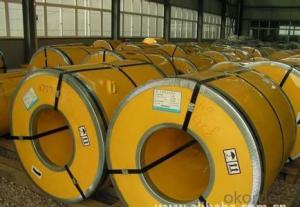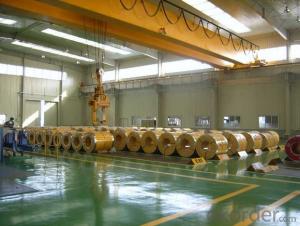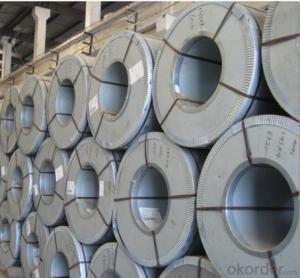Stainless Steel Coil Cold Rolled 201 Full Hard Surface No.2E with High Quality
- Loading Port:
- China main port
- Payment Terms:
- TT or LC
- Min Order Qty:
- 25 m.t.
- Supply Capability:
- 20000 m.t./month
OKorder Service Pledge
OKorder Financial Service
You Might Also Like
1. Structure of Stainless Steel Coil Cold Rolled 201 Descriptions
Stainless Steel 201 is a new kind of Austenite stainless steel by used Mn, N replace Ni.
The steel has good corrosion resistance and hot / cold processing performance, instead of 304 stainless steel products for used in the not high of corrosive environment, such as indoor, inland city outdoor etc.
2. Main Features of the Stainless Steel Coil Cold Rolled 201
Thickness: 0.2mm to 1.5mm
Width: 10mm to 1240mm
Type: 200 Series
Length: As customer's requested
Standard: JIS, SUS, AISI, ASTM
Grade: 201-J1, 201-J4, AISI201, AISI202…
Finish: BA, 2B, 8K, NO.3, NO.4, HL…
Hardness: Low Hard(190 HV Max); Half Hard(240-280HV); Full Hard(42-60 HRC)
Delivery Time: 15 to 20 day after the receive the deposit or 100%LC
Packaging: By wooden pallet, wooden case or according to customer's request
3. Stainless Steel Coil Cold Rolled 201 Images
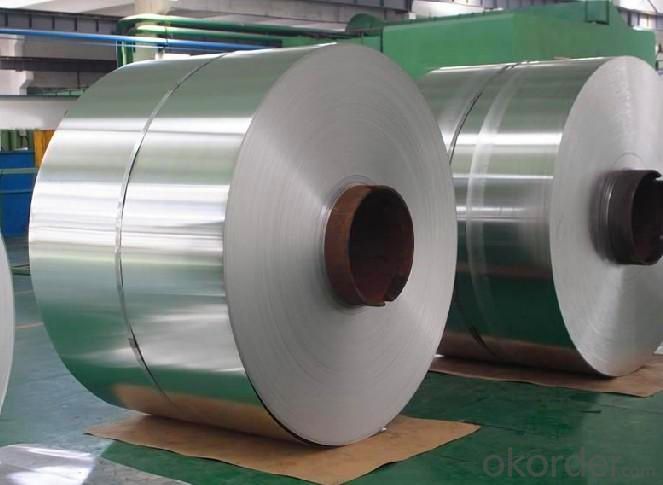
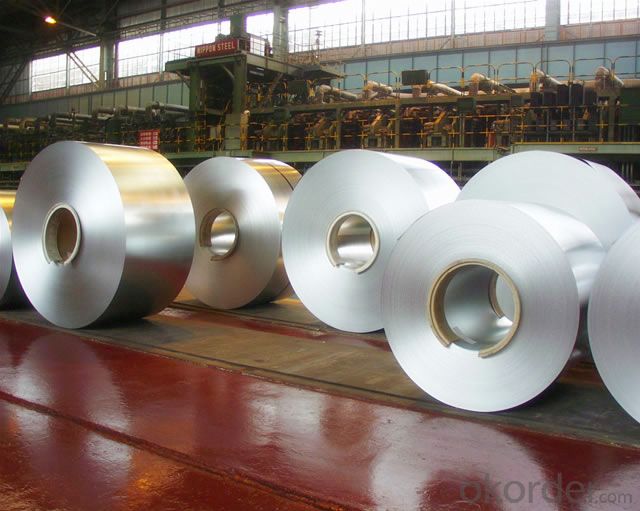
4. Stainless Steel Coil Cold Rolled 201 Specifications
Mechanical Property Contrast | YS (Mpa) | TS (Mpa) | EL(%) | HV | REMARK |
Stainless Steel 201 | 426 | 880 | 52 | 224 | 1.0t |
Stainless Steel 304 | 285 | 710 | 58 | 165 | 1.0t |
Stainless Steel 200 Series Chemicals Contrast (wt. %) | ||||||||
Chemicals | C | Si | Mn | Cr | Ni | N | Other | |
205 | 0.12-0.25 | ≤0.75 | 14.0-15.0 | 16.5-18.0 | 1.0-1.75 | 0.32-0.4 | ||
JIS, | 201 | ≤0.15 | ≤1.0 | 5.5-7.5 | 16.0-18.0 | 3.5-5.5 | ≤0.25 | - |
201L | ≤0.03 | ≤0.75 | 5.5-7.5 | 16.0-18.0 | 3.5-5.5 | ≤0.25 | - | |
202 | ≤0.15 | ≤1.0 | 7.5-10.0 | 17.0-19.0 | 4.0-6.0 | ≤0.25 | - | |
201LN | ≤0.03 | ≤0.75 | 6.4-7.5 | 16.0-17.5 | 4.0-5.5 | 0.1-0.25 | Cu≤1.0 | |
India | 201-J1 | ≤0.08 | ≤0.75 | 7.0-8.0 | 15.0-17.0 | 4.0-5.0 | ≤0.1 | Cu≤1.5 |
201-J3 | ≤0.08 | ≤0.75 | 9.0-10.5 | 14.0-16.0 | 2.0-3.0 | ≤0.15 | Cu≤2.0 | |
201-J4 | ≤0.10 | ≤0.75 | 8.5-10.0 | 15.0-16.0 | ≤1.2 | ≤0.2 | Cu≤2.0 | |
America | 204 | ≤0.03 | ≤1.0 | 7.0-9.0 | 15.0-17.0 | 1.5-3.0 | 0.15-0.3 | (Cu) |
H400 | ≤0.10 | ≤1.0 | 6.0-9.0 | 17.0-19.5 | ≤3.5 | ≤0.3 | - | |
Japan | YUS130S | 0.09 | 0.5 | 11.0 | 18.0 | 6.5 | 0.35 | - |
NTK S-4 | 0.17 | 0.43 | 14.7 | 17.7 | 1.3 | 0.35 | - | |
NM15M | 0.08 | 0.8 | 14.5 | 17.0 | 4.3 | 0.33 | - | |
Europe America | 219 | ≤0.04 | ≤0.75 | 8.0-10.0 | 19.0-21.5 | 5.5-7.5 | 0.15-0.4 | - |
Cromanite | ≤0.08 | ≤1.0 | 9.5-11.0 | 18.0-20.0 | ≤1.0 | 0.4-0.6 | - | |
201 Surface | Characteristic and Application of Stainless Steel Coil Cold Rolled 201 |
2B | The surface brightness and flatness of 2B is better than 2D then through a special surface treatment to improve its mechanical properties, 2B could nearly Satisfy comprehensive uses |
No.4 | Polished with abrasive belt of grit#150#180, have better brightness with discontinuous coarse stria, but thinner than NO.3, are used as bathtub buildings inner and electrical appliances kitchen utensils and food processing. |
BA | Cold rolled, bright annealed and skin-passed, the product have excellent brightness like mirror kitchen apparatus, etc. |
8K | The product have excellent brightness and prefer bright can be the mirror. |
5. FAQ of Stainless Steel Coil Cold Rolled 201
Q: Are you factory or trader?
A: We certainly are stainless steel manufacturer and have processing plant.
Q: Can you provide mill test certificate?
A: Yes! Mill test certificate for both hot rolled raw material coils and cold rolled coils are available.
Q: How to get a sample?
A: Free samples are available for your checking and testing. And to get free samples, please send us your detailed receiving address (including post code) and your DHL/FEDEX/UPS account for collecting samples, courier cost will be paid in your side.
- Q:What is the difference between hot rolled and cold rolled stainless steel strips?
- Stainless steel strips undergo different production processes depending on their desired properties. Hot rolled strips are made by passing the steel through rollers at a high temperature, typically above 1,000 degrees Celsius. This increases the steel's malleability, making it easier to shape into various forms. Hot rolled strips generally have a rough surface and slightly rounded edges. In contrast, cold rolled strips are produced by passing the steel through rollers at room temperature or slightly below. This process improves the surface finish and dimensional accuracy of the strips. Cold rolled strips have a smoother surface and sharper edges compared to hot rolled strips. Mechanically, the two types of strips differ as well. Hot rolled strips have a higher yield strength and are more ductile, making them suitable for applications that involve shaping or bending. On the other hand, cold rolled strips have a higher tensile strength and are generally harder, making them ideal for applications that require strength and durability. Cost-wise, hot rolled stainless steel strips are generally cheaper to produce than cold rolled strips. However, the additional processing steps involved in cold rolling often result in higher production costs. Ultimately, the choice between hot rolled and cold rolled stainless steel strips depends on the specific requirements of the application. Hot rolled strips are suitable when shaping or bending is necessary, while cold rolled strips are preferred for their strength and smooth surface finish.
- Q:Can stainless steel strips be used in automotive industries?
- Yes, stainless steel strips can be used in automotive industries. Stainless steel is known for its excellent corrosion resistance, high strength, and durability, making it a suitable material for various automotive applications. Stainless steel strips are commonly used in the manufacturing of automotive components such as exhaust systems, trim, body panels, brackets, and reinforcements. They offer resistance to heat, chemicals, and wear, making them ideal for withstanding the harsh conditions found in automotive environments. Additionally, stainless steel strips can be easily formed, welded, and fabricated, allowing for flexibility in design and efficient production. Overall, stainless steel strips are a reliable and popular choice in the automotive industry.
- Q:Are stainless steel strips suitable for architectural signage?
- Yes, stainless steel strips are suitable for architectural signage. Stainless steel is a popular choice for architectural applications due to its durability, aesthetic appeal, and resistance to corrosion. It is a versatile material that can be easily formed into different shapes and sizes, making it suitable for creating various types of signage, including letters, logos, and plaques. Stainless steel strips offer a sleek and modern look that can complement any architectural design. They can be finished in different ways, such as brushed, polished, or etched, to achieve the desired visual effect. The material also provides excellent weather resistance, making it suitable for both indoor and outdoor signage. In addition to its aesthetic qualities, stainless steel is a highly durable material that can withstand harsh environmental conditions. It is resistant to corrosion, rust, and fading, ensuring that the signage remains visually appealing and readable for a long time. This makes stainless steel strips a reliable choice for architectural signage, especially in high-traffic areas or locations exposed to extreme weather conditions. Furthermore, stainless steel is a low maintenance material, requiring minimal upkeep to keep it in top condition. It is easy to clean and maintain, making it a cost-effective choice in the long run. Overall, stainless steel strips are a suitable option for architectural signage due to their durability, aesthetic appeal, resistance to corrosion, and low maintenance requirements. Whether for commercial buildings, residential complexes, or public spaces, stainless steel signage can add a touch of sophistication and professionalism to any architectural project.
- Q:What are the common thicknesses available for stainless steel strips?
- The specific requirements and applications determine the varying common thicknesses of stainless steel strips. In the market, one can commonly find thicknesses like 0.2mm, 0.3mm, 0.4mm, 0.5mm, 0.6mm, 0.8mm, 1.0mm, 1.2mm, 1.5mm, 2.0mm, and 3.0mm. These thicknesses serve various purposes including the production of appliance components, automotive parts, construction materials, and numerous industrial applications. One must note that these thicknesses can differ among suppliers and manufacturers. Hence, it is advisable to verify the availability of the desired thickness with the specific supplier.
- Q:Can stainless steel strips be used in the pharmaceutical machinery?
- Indeed, pharmaceutical machinery can utilize stainless steel strips. Stainless steel is widely employed in the pharmaceutical field owing to its remarkable resistance to corrosion, durability, and effortless cleaning. Moreover, it does not react with the majority of pharmaceutical substances, rendering it appropriate for diverse applications including equipment frames, conveyors, tanks, and process piping. Furthermore, stainless steel strips can be conveniently fabricated and tailored to fulfill the precise specifications of pharmaceutical machinery, guaranteeing an elevated standard of quality and dependability throughout the production processes.
- Q:Are stainless steel strips suitable for brewery equipment?
- Indeed, brewery equipment can greatly benefit from the utilization of stainless steel strips. Renowned for its impeccable corrosion resistance, durability, and hygienic attributes, stainless steel stands as a favored material choice. Such strips may be employed in crafting a multitude of brewery equipment components like fermentation tanks, brewhouses, piping, and fittings. Thanks to its remarkable resistance against rust and corrosion, the equipment remains untainted, maintaining the utmost sanitation throughout the brewing process. Furthermore, stainless steel's effortless cleaning and upkeep are of paramount importance in guaranteeing the beer's quality and consistency.
- Q:How do you prevent discoloration of stainless steel strips?
- There are several steps you can take to prevent discoloration of stainless steel strips: - Make sure to clean the stainless steel regularly to remove any dirt or contaminants that can lead to discoloration. Use a mild detergent or stainless steel cleaner, along with a soft cloth or sponge. Avoid using abrasive materials or harsh chemicals that can damage the surface. - After cleaning, it is important to thoroughly dry the stainless steel strips to prevent water spots or mineral deposits. Use a clean, lint-free cloth to ensure there is no moisture left. - Avoid exposing the stainless steel to harsh chemicals, as they can cause discoloration. Try to steer clear of bleach, chlorides, acids, and other corrosive substances. If accidental exposure does occur, rinse the strips immediately with clean water and dry them thoroughly. - Applying a protective coating or finish can help prevent discoloration and improve the appearance of the stainless steel strips. There are different types of coatings available, such as clear lacquer, polyurethane, or wax. Follow the instructions provided by the manufacturer for application and reapplication. - It is important to avoid subjecting the stainless steel strips to high temperatures, as excessive heat can cause discoloration or warping. Use trivets, pot holders, or heat-resistant mats to protect the surface when placing hot pans or pots on the stainless steel. - Regular maintenance is also crucial in preventing discoloration. Check the strips for any signs of damage or corrosion, and address any issues promptly. If discoloration does occur, there are stainless steel cleaners and polishes available that can help restore the original appearance. By implementing these preventive measures and maintaining proper care, you can greatly reduce the risk of discoloration and keep your stainless steel strips looking clean and vibrant for longer periods of time.
- Q:What is the cost of stainless steel strips compared to other materials?
- The price of stainless steel strips can differ based on factors like the grade of stainless steel, the thickness and width of the strips, and the quantity being bought. Generally, stainless steel strips are pricier compared to materials such as aluminum or carbon steel. This is mainly because of the increased cost of raw materials and the additional processing needed to produce stainless steel. However, the strength, resistance to corrosion, and pleasing appearance of stainless steel make it a popular choice in various industries, including construction, automotive, and manufacturing. Although stainless steel strips may have a higher initial cost, they often offer long-term cost savings due to their durability and low maintenance requirements.
- Q:How do stainless steel strips perform in the presence of hydrochloric acid?
- Stainless steel strips generally have good resistance to hydrochloric acid due to the high levels of chromium present in their composition. The chromium forms a protective layer on the surface of the steel, known as the passive film, which prevents the acid from corroding or damaging the material. However, the performance can vary depending on the specific grade of stainless steel and the concentration and temperature of the hydrochloric acid.
- Q:Can stainless steel strips be used in oil and gas industries?
- Yes, stainless steel strips can be used in oil and gas industries. Stainless steel is known for its excellent resistance to corrosion, high strength, and durability, making it an ideal material for various applications in the oil and gas sector. Stainless steel strips can be used for fabricating pipes, tubes, fittings, valves, heat exchangers, and other components that are exposed to harsh operating conditions, including corrosive environments, high temperatures, and high pressures. Additionally, stainless steel offers good weldability and formability, allowing for easy fabrication and installation in oil and gas facilities. Overall, stainless steel strips provide the necessary reliability and performance required in the oil and gas industry.
1. Manufacturer Overview |
|
|---|---|
| Location | |
| Year Established | |
| Annual Output Value | |
| Main Markets | |
| Company Certifications | |
2. Manufacturer Certificates |
|
|---|---|
| a) Certification Name | |
| Range | |
| Reference | |
| Validity Period | |
3. Manufacturer Capability |
|
|---|---|
| a)Trade Capacity | |
| Nearest Port | |
| Export Percentage | |
| No.of Employees in Trade Department | |
| Language Spoken: | |
| b)Factory Information | |
| Factory Size: | |
| No. of Production Lines | |
| Contract Manufacturing | |
| Product Price Range | |
Send your message to us
Stainless Steel Coil Cold Rolled 201 Full Hard Surface No.2E with High Quality
- Loading Port:
- China main port
- Payment Terms:
- TT or LC
- Min Order Qty:
- 25 m.t.
- Supply Capability:
- 20000 m.t./month
OKorder Service Pledge
OKorder Financial Service
Similar products
New products
Hot products
Related keywords
